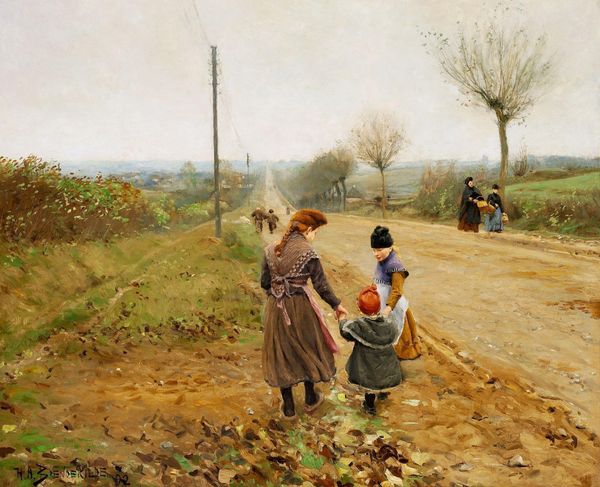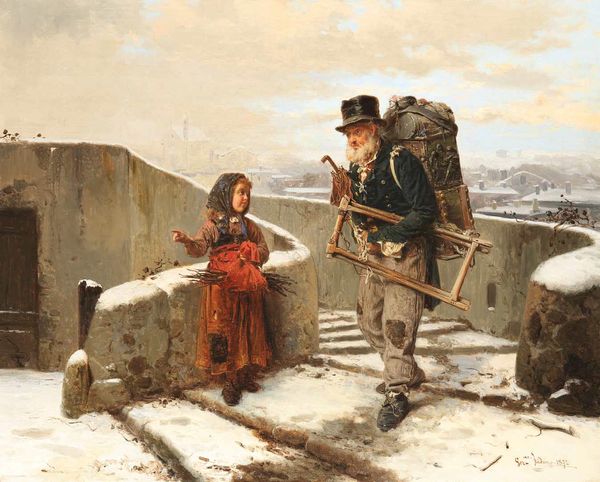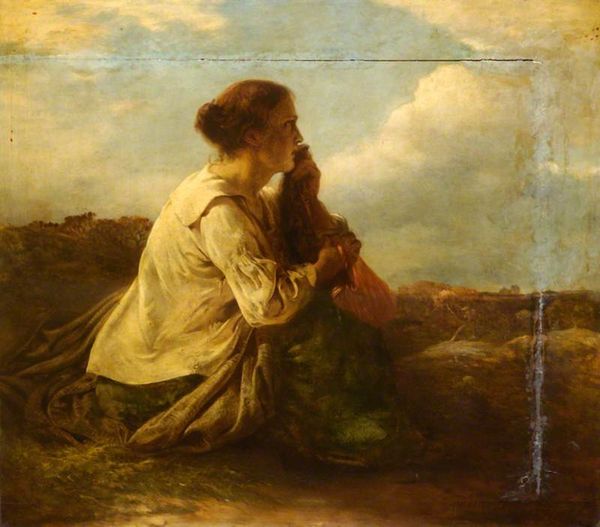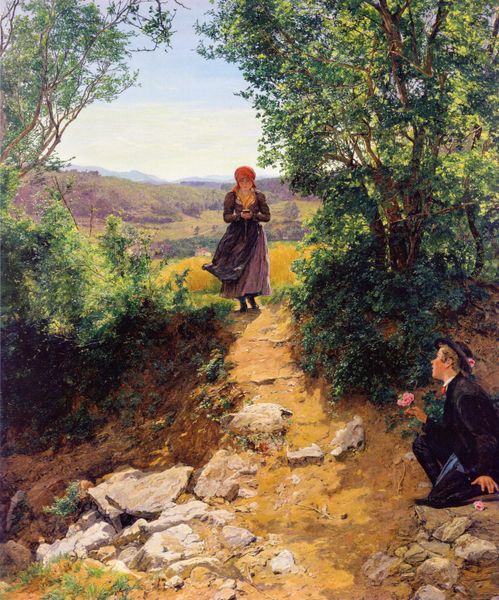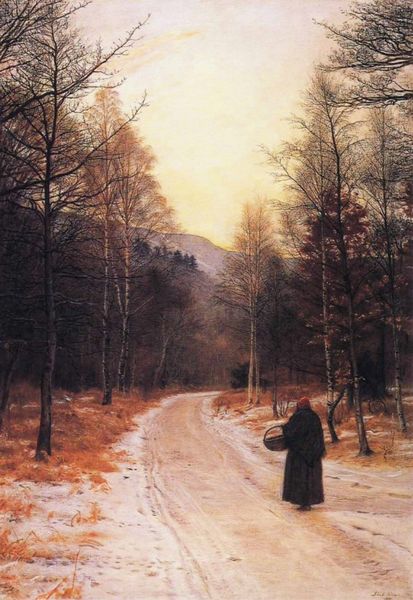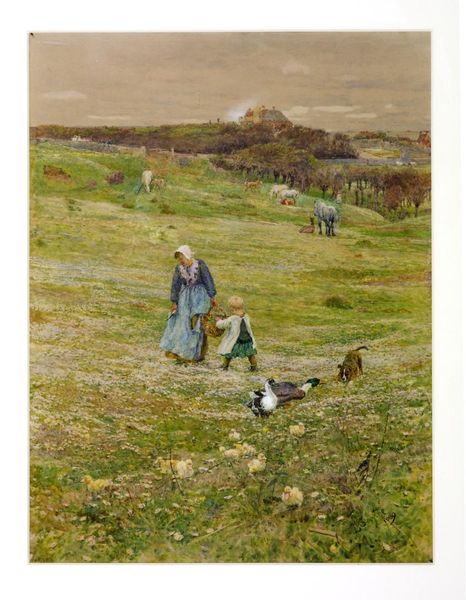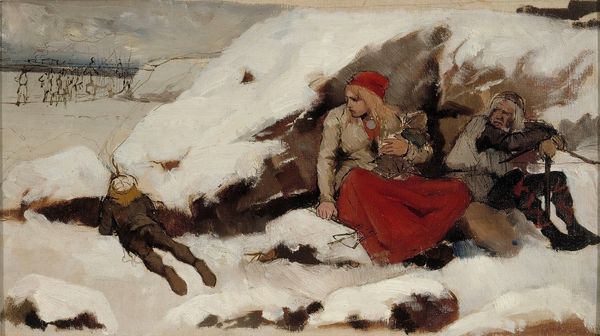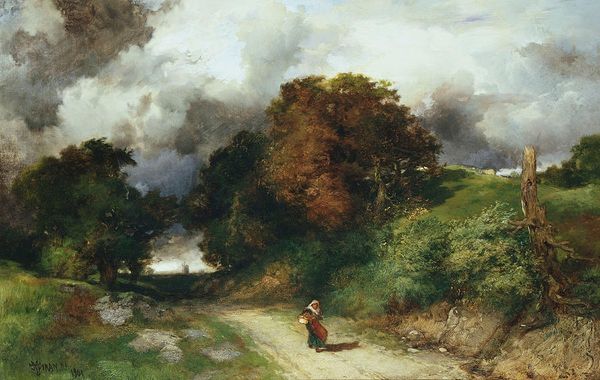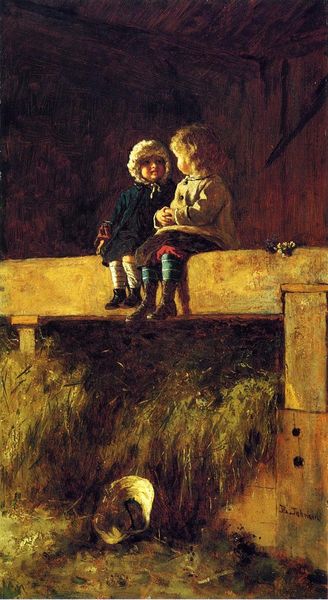
painting, oil-paint
#
painting
#
oil-paint
#
landscape
#
figuration
#
oil painting
#
romanticism
#
genre-painting
#
realism
Copyright: Public domain
Curator: Immediately I see a kind of mournful procession under a turbulent sky. The color palette seems entirely dictated by earth and weather. Editor: Indeed, this work is titled "Cauld Blaws the Wind Frae East to West," painted in oil by Joseph Farquharson. Though undated, the piece captures a specific mood evoked through realist and romanticist styles, where genre painting emphasizes universal human experiences in stark landscapes. Curator: The visual rhythm of their bodies and the marks in the watery ground create a powerful metaphor for the endurance of life through harsh times. Even the colors tell a story – somber browns meeting bright orange in figures fighting wind and weather. Editor: The figures themselves are telling; the woman’s gesture appears simultaneously protective and pleading. The faces are obscured, making them archetypal rather than individual—it is a brilliant method for conveying the human cost in isolated, perhaps socio-economically challenging areas. The viewer, of course, completes that symbolic meaning by mapping their experience of hardship onto this picture. Curator: That obscured detail encourages deeper exploration of implied narratives. Does the lack of specifics deepen empathy for those enduring hard circumstances—almost like votive figures painted anonymously? Editor: It's tempting to speculate, given Farquharson’s penchant for capturing rural scenes during periods of immense social and economic change in Scotland, where historical continuity played a role in forming national identity. These pieces served a dual purpose; while highlighting struggles and celebrating survival, it prompted reflection about a community's ability to resist societal disruptions via strength and tradition. Curator: The cultural weight seems centered around images, like this family traversing a difficult landscape, symbolizing larger community struggles—and it prompts the questions, what remains after disruptive changes, and how do we support the survival of others as part of one unified identity? Editor: In this respect, it presents more than mere imagery. It prompts us to confront broader challenges tied to societal progress, reminding us that what we remember affects our willingness to extend compassion. Curator: I hadn't thought about its contribution to forming memory through an art piece of hardship... fascinating. Editor: Precisely; let's consider this interplay more often.
Comments
No comments
Be the first to comment and join the conversation on the ultimate creative platform.



